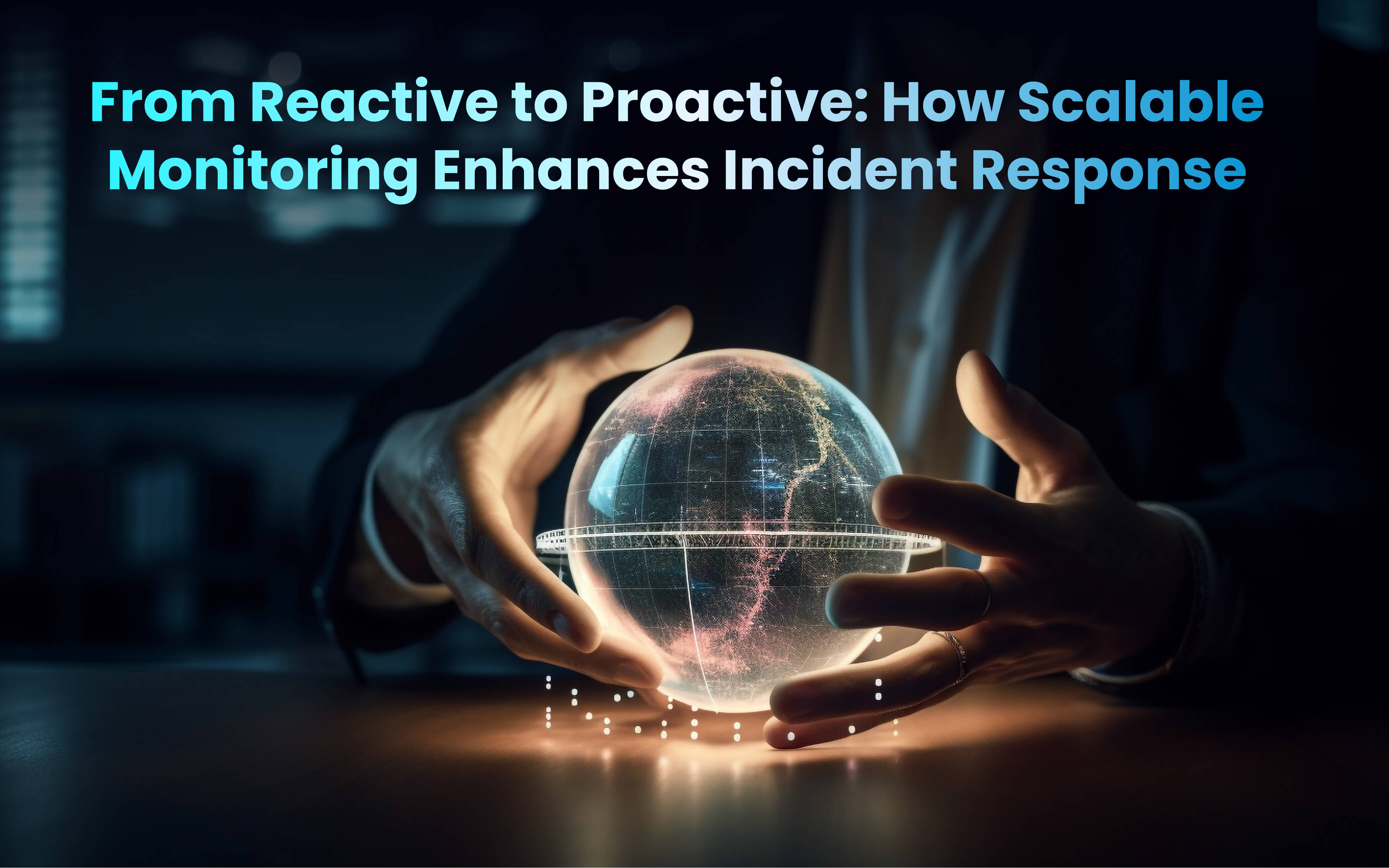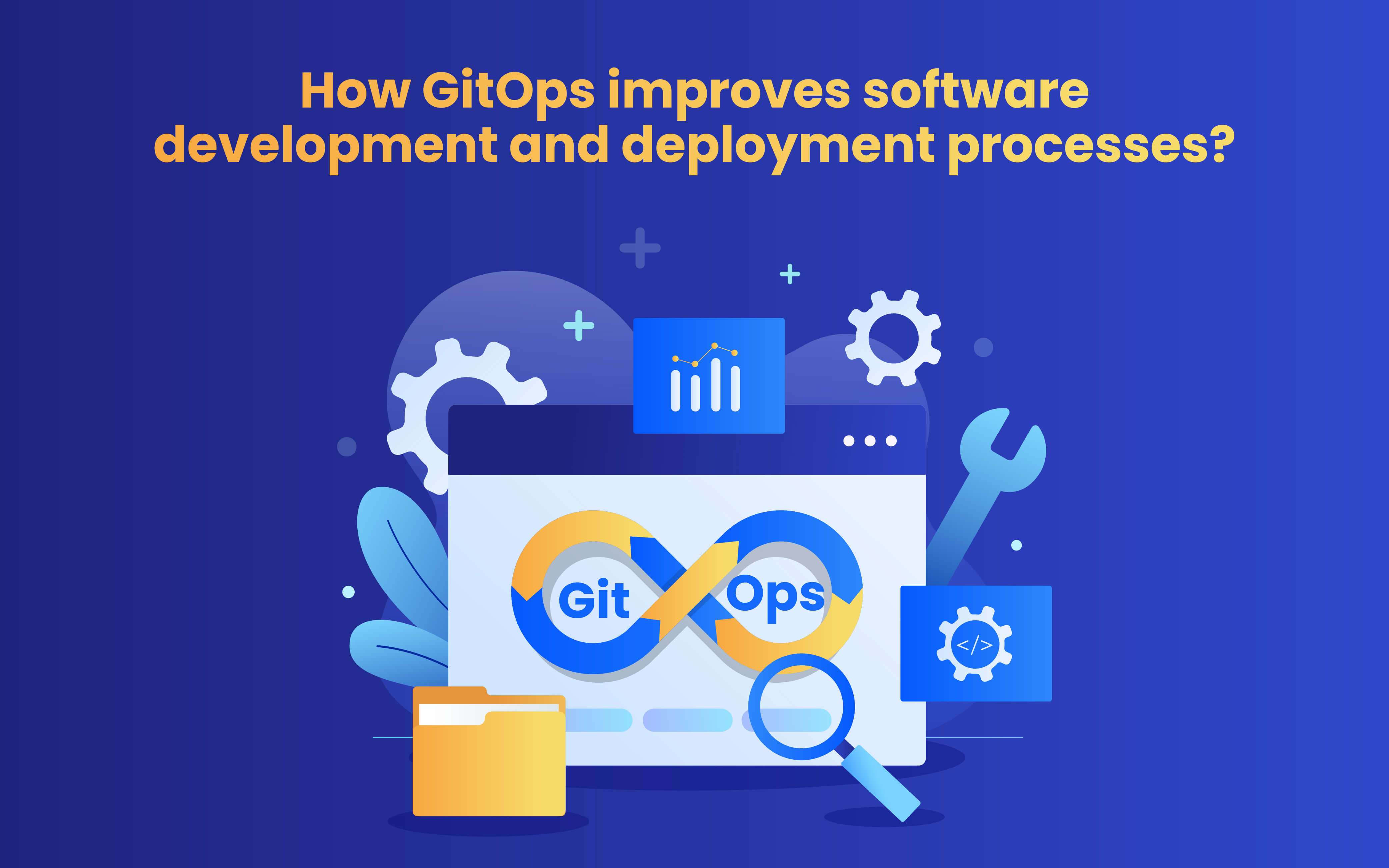Blogs
To know about all things Digitisation and Innovation read our blogs here.
DevOps
From Reactive to Proactive: How Scalable Monitoring Enhances Incident Response
SID Global Solutions
5 June 2023

Introduction
Incident response is a critical aspect of maintaining the stability and availability of digital systems. Traditional reactive approaches to incident response are no longer sufficient in today’s fast-paced and complex technological landscape. This guide explores the shift towards proactive incident response and the crucial role that scalable monitoring plays in enhancing incident response capabilities.
Also Read: Unlocking Resilience: The Power of Multi-Cloud and Multi-Region Deployment
The Need for Proactive Incident Response
Reactive incident response, where organizations address issues after they occur, is no longer adequate for modern businesses. In today’s fast-paced and highly competitive digital landscape, downtime and service disruptions can have significant financial and reputational implications. Proactive incident response is an approach that focuses on identifying and mitigating potential incidents before they impact the business.
- Minimizing Downtime: One of the key benefits of proactive incident response is minimizing downtime. By adopting a proactive approach, organizations can detect and address potential issues at an early stage, preventing them from escalating into full-blown incidents. This significantly reduces the time required to resolve incidents and minimizes the impact on customers, ensuring uninterrupted service delivery.
- Reducing Costs: Proactive incident response helps in reducing costs. By preventing incidents from occurring or minimizing their impact, organizations can save on remediation costs, such as emergency fixes, extended downtimes, or costly recovery measures. Furthermore, the proactive approach enables better resource allocation and optimization, as teams can prioritize their efforts based on the severity and potential impact of incidents.
- Customer Satisfaction: Customer satisfaction is another crucial aspect that proactive incident response addresses. By identifying and addressing potential issues proactively, organizations can deliver a seamless and uninterrupted experience to their customers. This leads to higher customer satisfaction levels, increased trust in the brand, and ultimately, improved customer retention and loyalty.
Understanding Scalable Monitoring
To effectively implement proactive incident response, organizations must have a scalable monitoring system in place. Scalable monitoring refers to the ability to collect, analyze, and process large volumes of data from various sources in real-time, without compromising performance.
- Scalability: Scalability in monitoring is essential because traditional monitoring solutions may struggle to handle the increasing complexity and volume of data generated by modern digital environments. Scalable monitoring solutions, on the other hand, can effortlessly handle the growing data volumes and adapt to dynamic infrastructures, ensuring continuous visibility into the systems.
- Real-time Data Collection: Real-time data collection is a critical aspect of scalable monitoring. Organizations need to gather data from diverse sources such as logs, metrics, events, and user behavior. This data is then processed and analyzed to identify patterns, anomalies, and potential incidents. By leveraging real-time data collection, organizations can detect and respond to incidents swiftly, minimizing the impact on their services.
- Data Analysis: Another key aspect of scalable monitoring is the ability to handle data analysis and processing at scale. With large volumes of data being generated, traditional manual analysis becomes impractical. Scalable monitoring solutions utilize advanced analytics techniques, such as machine learning and statistical analysis, to automate the detection of patterns, anomalies, and potential incidents. These techniques enable organizations to make sense of the vast amounts of data and identify actionable insights in real-time.
- Alerts: scalable monitoring supports proactive alerting mechanisms. When anomalies or suspicious activities are detected, alerts are generated and sent to the appropriate teams. Proactive alerts allow teams to take immediate action, investigate potential incidents, and resolve them before they impact the business. The scalability of the monitoring system ensures that alerts are delivered promptly and accurately, enabling quick response times.
Also Read: Digital Engineering: A Strategic Imperative for Businesses in the Digital Age
Building a Proactive Incident Response Framework
Building a proactive incident response framework is crucial to effectively mitigate and address potential issues before they escalate. By implementing the following steps, organizations can establish a robust incident response strategy that leverages scalable monitoring:
- Establishing incident response objectives and defining key metrics: Start by clearly defining your incident response objectives, such as reducing mean time to resolution (MTTR), minimizing customer impact, or ensuring compliance with service level agreements (SLAs). Identify key metrics to measure the effectiveness of your proactive approach, such as the number of incidents detected proactively, the time taken to detect and respond, and the overall incident resolution time.
- Implementing real-time monitoring and alerting: Deploy a comprehensive monitoring solution that provides real-time visibility into your infrastructure, applications, and network. Leverage monitoring tools capable of collecting and analyzing data from various sources, including logs, metrics, and user behavior. Implement proactive alerting mechanisms that notify the appropriate teams when anomalies or suspicious activities are detected. By utilizing scalable monitoring tools, you can gain actionable insights and respond swiftly to potential incidents.
- Applying predictive analytics and anomaly detection: Take advantage of predictive analytics and anomaly detection techniques to identify patterns, trends, and deviations that may indicate potential incidents. Leverage machine learning algorithms to analyze historical data and detect anomalies in real-time. By continuously learning from past incidents and patterns, the system can proactively raise alerts or trigger automated responses based on predefined thresholds or anomalies. This empowers your incident response team to take preemptive actions, mitigating potential issues before they impact your services.
- Automating incident response processes: Automation plays a pivotal role in a proactive incident response framework. Implement automation tools and workflows to streamline incident detection, triage, and response. Develop playbooks that outline step-by-step response procedures for different incident types. Automated incident response actions can include activities such as restarting services, scaling resources, or notifying the appropriate teams. By automating routine tasks, your team can focus on more critical aspects of incident resolution, leading to faster response times and improved efficiency.
- Continuous improvement and learning: Incident response should be viewed as an iterative process that evolves over time. After resolving incidents, conduct thorough post-incident analysis to identify root causes and potential areas for improvement. Foster a blameless culture where team members can openly share their experiences and lessons learned. Document incident response knowledge, create a centralized repository, and encourage knowledge sharing among team members. Regularly review and update incident response procedures based on the insights gained from past incidents, industry best practices, and emerging trends.
Market Trends and Future Outlook
In today’s dynamic technological landscape, incident response and scalable monitoring continue to evolve. Organizations are adopting innovative approaches and technologies to enhance their proactive incident response capabilities. Here are some key market trends and future outlooks:
- Cloud-native monitoring solutions: As organizations increasingly migrate their infrastructure and applications to the cloud, the demand for cloud-native monitoring solutions is on the rise. These solutions offer scalability, flexibility, and advanced monitoring capabilities tailored to cloud environments.
- Artificial intelligence and machine learning: The integration of AI and ML in incident response enables predictive analytics, anomaly detection, and automated decision-making. These technologies help in identifying patterns and anomalies, providing early warnings, and facilitating faster incident resolution.
- Convergence of DevOps and incident response: DevOps practices, such as infrastructure as code (IaC), continuous integration/continuous deployment (CI/CD), and collaboration, are being integrated with incident response processes. This convergence promotes a culture of collaboration, agility, and automation, resulting in improved incident response efficiency.
- Increased focus on security incident response: As cyber threats become more sophisticated, organizations are investing in security incident response capabilities. This includes integrating security monitoring, threat intelligence, and incident response processes to proactively identify and mitigate security incidents.
- Advancements in automation and orchestration: Automation and orchestration technologies are becoming more sophisticated, enabling organizations to automate complex incident response workflows. From automated ticket creation and assignment to orchestrated incident response across multiple systems, these advancements enhance response times and reduce manual efforts.
Building a proactive incident response framework is essential to effectively address potential issues and minimize their impact. By implementing real-time monitoring, predictive analytics, automation, and fostering a culture of continuous improvement, organizations can stay ahead of incidents and ensure smooth operations. Embracing market trends and emerging technologies will further enhance incident response capabilities, enabling organizations to proactively respond to evolving challenges.









